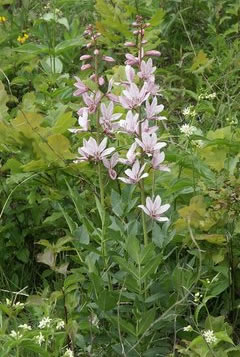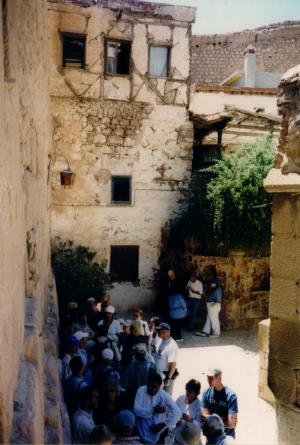
The Burning Bush
By: Carmen J. Fiesel

Moses and the Burning Bush
1 Now Moses was tending the flock of Jethro his father-in-law, the priest of Midian, and he led the flock to the far side of the desert and came to Horeb, the mountain of God. 2 There the angel of the LORD appeared to him in flames of fire from within a bush. Moses saw that though the bush was on fire it did not burn up. 3 So Moses thought, "I will go over and see this strange sight—why the bush does not burn up."
4 When the LORD saw that he had gone over to look, God called to him from within the bush, "Moses! Moses!"
And Moses said, "Here I am."5 "Do not come any closer," God said. "Take off your sandals, for the place where you are standing is holy ground." 6 Then he said, "I am the God of your father, the God of Abraham, the God of Isaac and the God of Jacob." At this, Moses hid his face, because he was afraid to look at God.
Exodus 3:1-6 (NIV)
I've been curious about the bush in that passage of scripture for many years. What kind of bush could burn but not be harmed? Now, one could dismiss this story as a myth or classify it as a miracle and leave it at that, but I often wonder if there could be more. If the tale is true, could it be possible that burning bushes occur naturally as well as supernaturally? If so, what kind of plant would behave that way and why? Do they still exist today? Where? Lets start at the beginning...
The Real Deal
The Biblical account places the event at the base of Mt. Horeb (believed to be Mt. Sinai) on the
Sinai Peninsula. Today, St. Catherine's Monastery is there, surrounding what is claimed to be the burning bush. It is apparently a rare, extremely long-lived species of bramble, Rubus sanctus, that is native to the area. In Latin, "sanctus" means "holy" (no doubt in reference to the Biblical event). The original bush has reportedly died, but a claimed descendant is still living and on display today. Although the bush may be in the same area as the original burning bush, I have found nothing about this bush that indicates bursting into flames is normal behavior for it.
The Imposter
To my surprise and delight I did find one plant that is actually capable of burning without being harmed. It's called (of course) the Burning Bush or the Gasplant (Dictamnus albus). These plants are herbaceous and produce beautiful
white flowers in late spring or early summer. A lemony scent is emitted from the flowers as well as flammable gas which is responsible for its pyrotechnics. The oils produced by the leaves are also combustible and can be a skin irritant for some. Propagation must be done by seed, but it takes years to mature. They don't transplant well, but will live for many years once established. A sun loving plant, they've been listed as being hardy between zones 2 and 9. I find these plants very curious and I'd love to give it a try. I came across only 3 varieties or cultivars: D. albus caucasicus, D. albus 'Purpurea', and D. albus 'Rubra'.
The Wannabes
Besides Rubus sanctus and Dictamnus albus, there are numerous other plants that have gotten the name Burning Bush. Plants in the genres of Euonymus, Bassia, and Combretum are some of those included. However, these plants are named so because of their brilliant fall coloring.
.jpg)